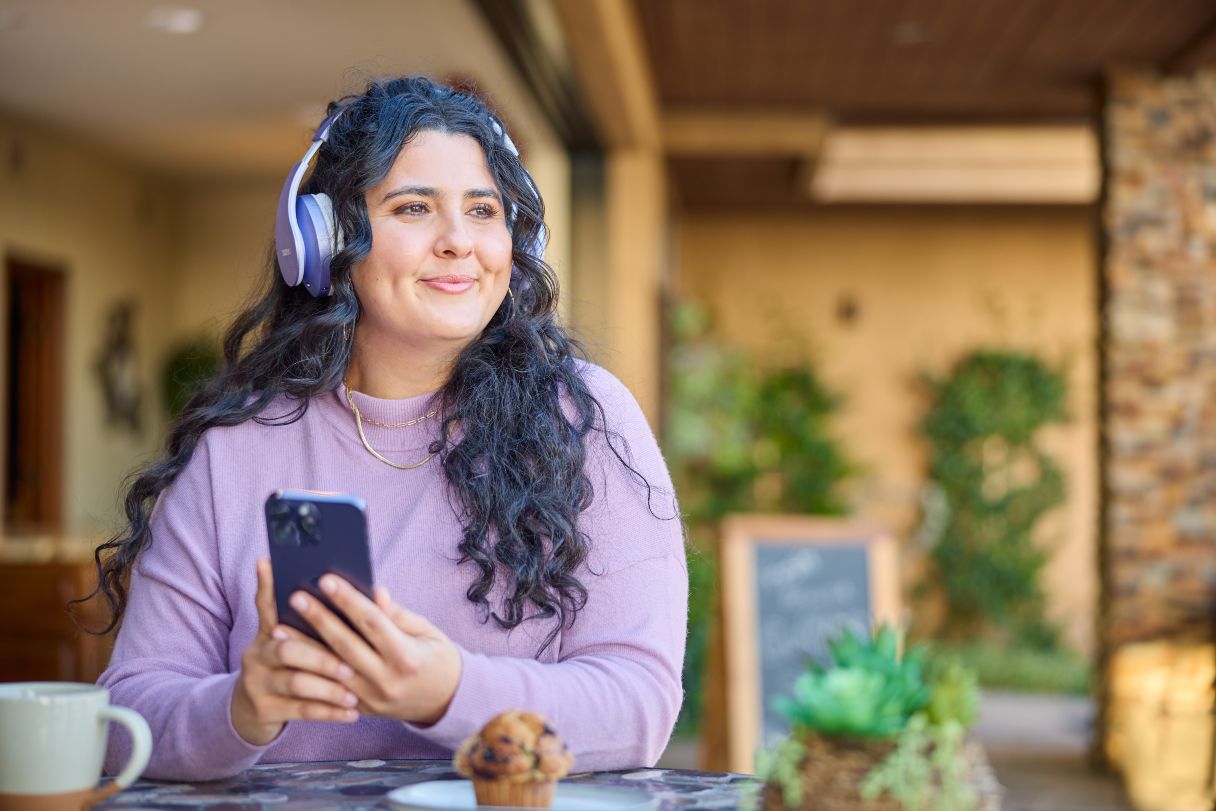Have you ever left a concert with your ears ringing, wondering if the music was worth the discomfort? Unfortunately, this can be an all too common occurrence, with approximately 40 million Americans between the ages of 20 and 69 experiencing some degree of noise-related hearing loss. Noise-induced hearing loss (NIHL) is caused by exposure to loud sounds that damage delicate structures in the inner ear — and it is preventable.1
NIHL can be temporary or permanent, depending on how loud and how long you’re exposed to the noise.1 Permanent damage occurs when the tiny hair cells in your inner ear become damaged beyond repair. These hair cells don’t regenerate, making prevention your best defense against noise-related hearing loss. Understanding how loud noises can harm your hearing can help you protect this vital sense.1
3 Factors That Influence NIHL
Are you concerned about being exposed to noise-induced hearing loss? There are several factors to consider.2
- Decibels (loudness of noise). Noise is recorded in decibels (dB or dBA) — the higher the number, the louder the noise.
- Distance (proximity to noise). The closer you get to the source of the noise, the louder it sounds.
- Time (length of noise exposure). Your safe listening time is cut in half for every three-decibel increase in noise level over 85 decibels.
Jobs That May Lead to Noise-Induced Hearing Loss
Occupations that involve exposure to hazardous noise levels may lead to noise-induced hearing loss. Here’s a chart highlighting some of the occupations and industries with high potential for NIHL, based on available data:
| Industry/Occupation | NIHL factors and information |
|---|---|
| Agriculture, forestry, fishing and hunting |
|
| Arts, entertainment and recreation |
|
| Construction |
|
| Healthcare and social assistance |
|
| Manufacturing |
|
| Mining |
|
| Transportation and warehousing |
|
Important Note: The National Institute for Occupational Safety and Health recommended exposure limit (REL) for occupational noise exposure is 85 dBA over an eight-hour shift, and exposure above this level is considered hazardous.6
Everyday Sources of NIHL
Factors in your daily life expose you to multiple sources of potentially harmful noise. Personal audio devices may lead to NIHL when you listen at high volumes for extended periods. Many smartphones now warn you when your volume exceeds safe levels, but these warnings may go unheeded.7
Concerts and sporting events can expose you to sound levels exceeding 100 decibels, enough to cause damage in a short amount of time. Power tools like lawnmowers, leaf blowers and chainsaws produce sounds that can harm your hearing with regular use. Even everyday traffic noise in busy cities can contribute to gradual hearing loss over time.1
Noise-Induced Hearing Loss Decibels Chart
Check out this noise level safety guide to see sounds on a continuum, from the safest to the most unsafe:2
| Sound | Number of decibels | Safe listening time | Effect on conversation |
|---|---|---|---|
|
Up to 70 | Unlimited (safe) |
|
|
91 | 2 hours |
|
|
100 | 15 minutes |
|
|
112 | 1 minute |
|
|
120 and up | Unsafe |
|
5 Early Signs of Noise-Related Hearing Loss
The onset of symptoms varies depending on your exposure patterns. Sudden exposure to extremely loud sounds, like explosions or gunshots, can cause immediate and severe hearing loss.1
More commonly, symptoms develop gradually over years of repeated exposure to moderately loud sounds, making the progression easy to miss until significant damage has occurred. Being able to recognize the early signs of noise-induced hearing loss helps you seek treatment before the damage becomes permanent or severe.1
1. Difficulty hearing speech
You have difficulty understanding speech in environments when others seem to hear fine. This happens because NIHL typically affects high-frequency sounds first. This means that it won’t be as noticeable at first. For example, consonants like s and th are harder to distinguish.9
2. Difficulty hearing other sounds
You may be unable to hear sirens, alarms and other high-pitched sounds that others are able to hear.9
3. Tinnitus (ringing in your ears)
Buzzing or ringing sensations often accompany noise-induced hearing loss. This might sound like hissing or whistling that persists even in quiet environments. While temporary tinnitus after loud noise exposure is common, persistent ringing may indicate potential permanent damage.9
4. Muffled hearing
Your hearing might seem dampened or distorted, as if everyone is mumbling or speaking through cotton. Sounds may lack clarity, and you may find yourself asking people to repeat things more frequently.1
5. Feeling tired after a listening session
You may find that you enjoy sitting in silence for a few minutes after your normal playlist or commute. Listening fatigue is a subtle symptom of hearing loss.10
Long-Term Health Effects of Noise-Induced Hearing Loss
The impact of noise-induced hearing loss extends far beyond difficulty hearing. Social withdrawal becomes common as you struggle to follow conversations in group settings or noisy restaurants. You might avoid social gatherings, leading to isolation and strained relationships with family and friends.2
Mental health consequences can follow untreated hearing loss. Research shows strong links between hearing loss and dementia. The constant effort required to understand speech can lead to listening fatigue, affecting your mood and overall well-being. Cognitive decline may accelerate as your brain works harder to process incomplete auditory information.11
life can diminish with permanent hearing damage. Simple pleasures like enjoying music, watching movies or having phone conversations can become challenging. Professional opportunities may decrease if your job requires strong communication skills. The irreversible nature of noise-induced hearing loss means that without proper intervention, these impacts are lifelong.11Treating Noise-Induced Hearing Loss
While there is no cure for permanent hearing loss, there are a few treatments that can help you manage the condition.
- Consider hearing aids. You can wear these devices on your ears to magnify sound.1
- Download a noise meter. This can alert you to damaging decibel levels or frequencies to prevent your hearing loss from getting worse.8
- Explore cochlear implants. If you have profound hearing loss, this electronic hearing device can be surgically implanted in your inner ear to provide sound signals to your brain.11
Tips to Prevent Noise-Induced Hearing Loss
Since hearing loss is irreversible, it’s best to prevent it before it happens.1 Use these safety tips to protect your hearing:
- Avoid loud noise whenever possible. If you must shout to be heard, the noise is too loud.1
- Buy quieter products. Look for noise ratings on products like appliances, power tools, children’s toys and hair dryers when you shop.2
- Keep your distance from the source. Move away from the source of the noise in loud environments.1
- Limit exposure at work. Use OSHA-certified ear protection products to help prevent hearing loss.8
- Lower the volume. Set personal listening devices like headphones and earbuds to no more than half their potential volume.2
How Loud Is Too Loud?
NIHL is the only type of hearing loss that is preventable, yet millions of people have already developed NIHL, with more putting their hearing at risk daily.1 Understanding how loud sounds damage your ears empowers you to make informed choices about noise exposure. By implementing simple prevention strategies today, you can preserve your hearing and maintain your quality of life for years to come.
Test Your Hearing Online
Financing Ear Care With the CareCredit Credit Card
The CareCredit credit card can help you pay for hearing care, including regular hearing tests, screenings and more.* Use our Acceptance Locator to find a hearing specialist near you that accepts CareCredit. Continue to invest in your wellness journey by downloading the CareCredit Mobile App to manage your account, find a provider on the go and easily access the Well U blog for more great articles, podcasts and videos.
In addition to hearing care, you can also use your CareCredit credit card for dentistry, cosmetic, pet care, vision, health systems, dermatology, pharmacy purchases, spa treatments and so much more within the CareCredit network. How will you invest in your health and wellness next?
Author Bio
Pamela Cagle, R.N., has extensive experience in a range of clinical settings, including ER, surgical and cardiovascular. For the past decade, she has leveraged her nursing experience in writing for health and technology publications such as AARP, VKTR, National Council on Aging and others. She is passionate about blending her medical and storytelling expertise to bring authenticity to health and wellness topics.







